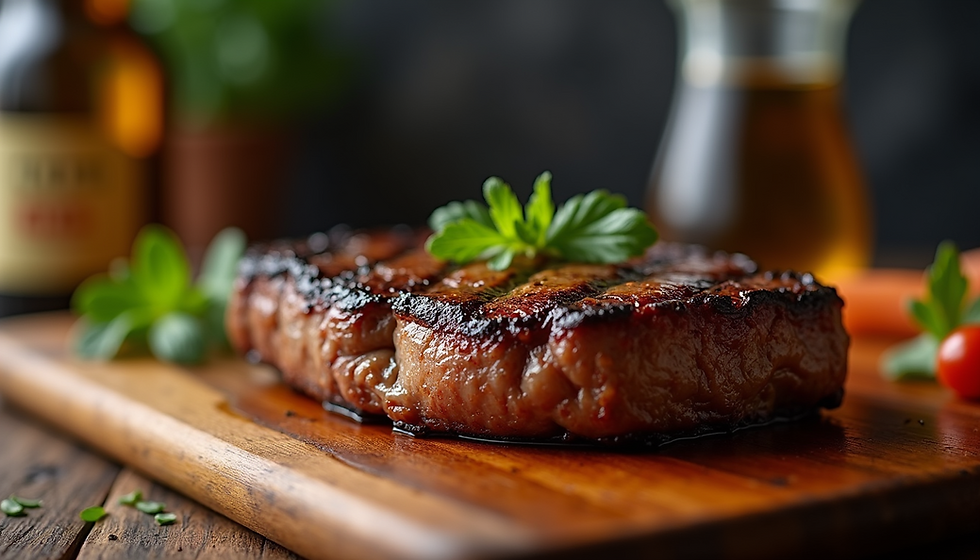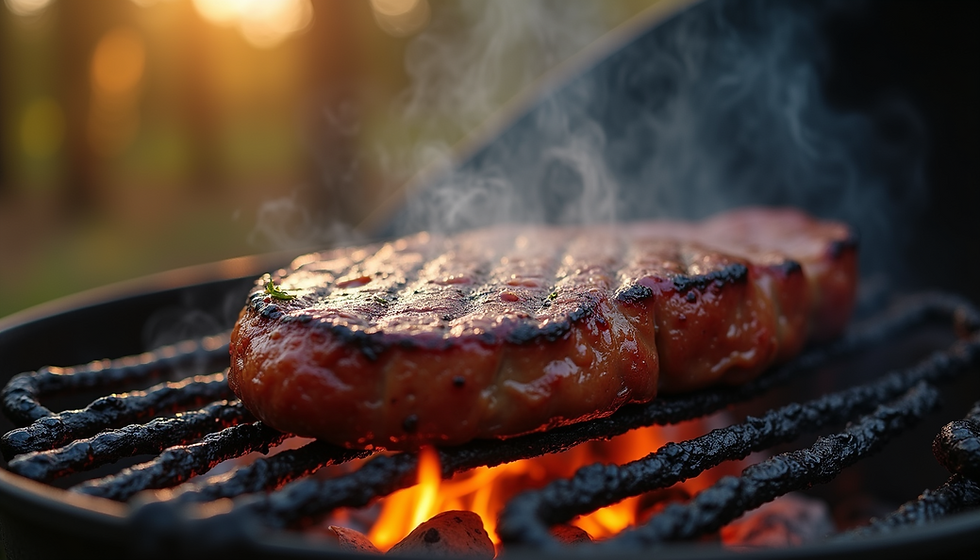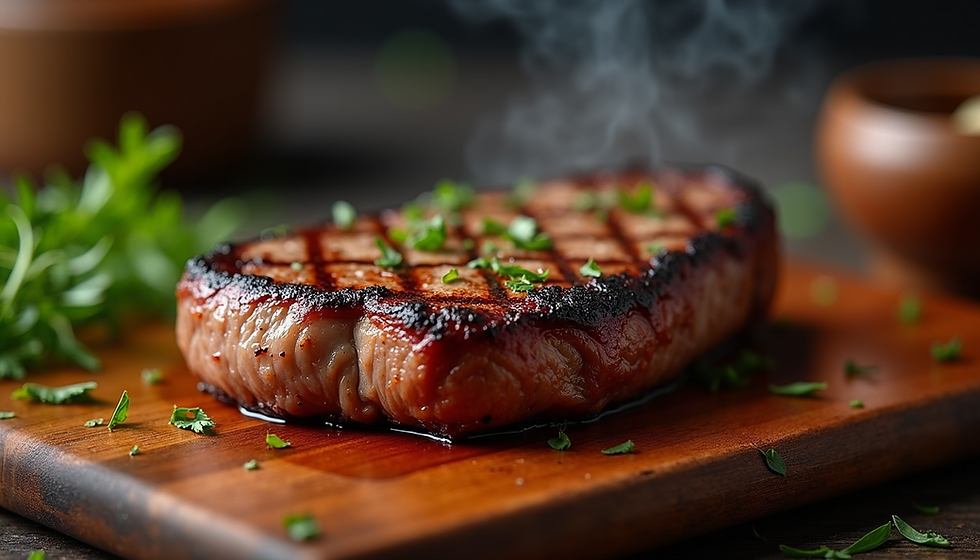An Insight into Perfectly Cooked Steaks
- Team @ Ezy Click Answers
- Jun 30
- 4 min read
Cooking the perfect steak is both an art and a science. Many fans of this mouth-watering dish consider it one of life's greatest pleasures. This blog post delves into the intricacies of perfectly cooked steaks, offering insights into methods, tips, and even where to find the best steaks in Sydney.
Perfectly Cooked Steaks
The definition of a perfectly cooked steak can vary greatly between individuals. Some prefer a rare, juicy cut, while others lean towards a well-done option. Regardless of personal preference, certain key factors contribute to the overall execution.
To achieve a perfectly cooked steak, understanding the different steak cuts is essential. Popular cuts include ribeye, tenderloin, and sirloin, each possessing unique characteristics. Ribeye offers fantastic marbling, delivering a rich flavor, whereas tenderloin is known for its tenderness. On the other hand, sirloin strikes a balance between flavor and affordability.
Why Temperature Matters
Temperature plays a critical role in steak preparation. Cooking meat at the right internal temperature ensures safety and enhances flavor. For instance, medium-rare steak is typically cooked to an internal temperature of 135°F (57°C). This temperature allows for a beautiful pink center while ensuring that the steak is tender and juicy.
Using a meat thermometer is a reliable way to check your steak's doneness. Below are the USDA recommended internal temperatures for different steak doneness levels:
Rare: 125°F (52°C)
Medium-Rare: 135°F (57°C)
Medium: 145°F (63°C)
Medium-Well: 150°F (66°C)
Well-Done: 160°F (71°C)
By using a meat thermometer, you can remove the guesswork and make informed decisions when cooking.

The Right Cooking Techniques
Achieving the ideal steak involves several cooking methods. Here are some popular techniques to help you achieve your perfect steak:
Grilling
Grilling is one of the most popular methods for cooking steaks. It adds a distinct flavor profile that many find irresistible. Preheat your grill, and ensure that it is hot before placing your steak on the grill grates. Aim to sear the steak for a few minutes on each side, depending on your desired level of doneness.
Pan-Seared
Pan-searing is another effective approach that produces a delicious crust on your steak. Heat a heavy skillet over high heat and add a small amount of oil. Once hot, place the steak in the pan, allowing it to sear without moving it for several minutes. Flip it and continue cooking until the desired doneness is achieved.
Sous Vide
Sous vide is a technique that involves vacuum-sealing the steak in a bag and cooking it to a precise temperature in a water bath. After cooking, you can sear it in a hot pan for a beautiful crust. This method guarantees consistent results and minimizes the chances of overcooking.
Enhancing Flavor with Seasonings
While a great cut of steak can often shine on its own, enhancing its flavor with seasonings is beneficial. Here are some recommendations:
Salt and Pepper: Simple yet effective, a generous sprinkling of kosher salt and cracked pepper can transform a steak into a savory delight.
Marinades: Marinades can introduce additional flavors and tenderize the meat. Consider using ingredients like soy sauce, garlic, and herbs to create a delicious marinade.
Compound Butters: Topping your perfectly cooked steak with a dollop of compound butter can elevate the dish. Mix softened butter with herbs, spices, or even blue cheese, and place it on the hot steak before serving.

Pairing Your Steak
The right side dishes and beverages can make a dining experience exceptional. When selecting wines, go for bold reds such as Cabernet Sauvignon or Malbec, as they complement the rich flavors of steak.
Consider serving your steak with sides like roasted vegetables, creamy mashed potatoes, or a fresh garden salad. Each of these pairs beautifully with a delicious piece of meat and adds balance to your meal.

Mastering Steak Cooking at Home
Cooking the perfect steak at home can sound daunting, but with practice, you can master it. Start by using quality cuts and ensure you know your desired level of doneness. Use various cooking techniques and experiment with seasonings until you find what works best for your palate.
One exciting approach is reverse searing, where you cook the steak at a low temperature in the oven first and finish with a hot skillet to create a crust. This method allows for great control over the internal temperature.
Final Tips for Steak Lovers
As you venture into cooking steaks, remember the following tips:
Allow your steak to come to room temperature before cooking. This helps ensure even cooking throughout.
Don't overcrowd the pan when cooking. This can lower the heat and cause steam, which prevents browning.
Let your steak rest after cooking for about 5-10 minutes. This allows juices to redistribute, resulting in a tender, juicy steak.
Mastering the art of perfectly cooked steaks takes time and patience, but the rewards are undoubtedly delicious. With a better understanding of cuts, cooking techniques, and seasoning options, you can create steak dishes that impress family and friends alike. Happy cooking!




Comments